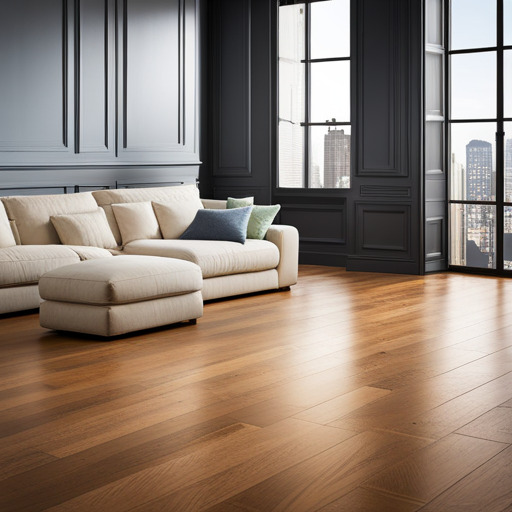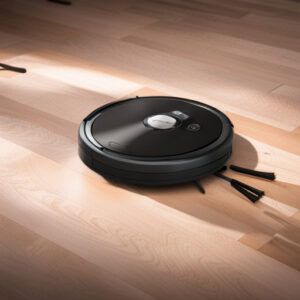Are you tired of lugging your bulky vacuum cleaner up and down the stairs to clean multiple floors in your home? Do you wonder if robot vacuums are capable of efficiently cleaning different levels of your house? Perhaps you’re curious about the features and limitations of robot vacuums when it comes to cleaning multiple floors.
In this comprehensive guide, we will delve into the capabilities of robot vacuums in cleaning multiple floors, addressing common concerns such as their navigation ability between floors, their effectiveness on different floor types, and the potential challenges they may face. We will explore the technological advancements that enable some robot vacuums to navigate and clean multiple levels autonomously. Additionally, we’ll discuss the practical considerations and tips for optimizing the performance of robot vacuums on multiple floors, including the placement of docking stations and the customization of cleaning schedules.
Stay tuned as we uncover the answers to these questions and provide you with valuable insights to help you make an informed decision about using robot vacuums on multiple floors.
How Do Robot Vacuums Work on Multiple Floors?
Robot vacuums work on multiple floors by using sensors to detect changes in floor elevation, allowing them to navigate between different levels in a home. When a robot vacuum encounters stairs or a drop-off, the sensors signal the vacuum to change direction or avoid falling, enabling it to clean different floors without getting stuck or causing damage.
These sensors also help the robot vacuum to create a map of the home, allowing it to remember multiple floor layouts and navigate efficiently between them. Additionally, some advanced robot vacuums come with features like room recognition and multi-floor mapping, further enhancing their ability to work seamlessly on different levels within a home.
Benefits of Using Robot Vacuums on Different Levels
Robot vacuums offer the benefit of convenience and time-saving, especially when cleaning multiple floors in a home. They can navigate seamlessly between different levels, eliminating the need for manual transport or setup. This makes them an ideal solution for busy individuals or families with multi-story homes.
Additionally, robot vacuums are equipped with advanced cleaning technologies, ensuring thorough and efficient cleaning on various floor types. From carpeted areas to hardwood or tile floors, these intelligent devices adapt their cleaning methods to suit different surfaces. This versatility allows them to maintain cleanliness throughout the entire home without requiring manual adjustments.
Furthermore, using robot vacuums on different levels contributes to a healthier living environment by reducing dust, allergens, and pet hair. Their consistent cleaning schedule helps prevent the accumulation of dirt and debris, promoting better indoor air quality. This can be particularly beneficial for individuals with allergies or respiratory issues, creating a more comfortable and hygienic living space.
Moreover, the autonomous nature of robot vacuums allows for hands-free operation, freeing up time for other tasks or activities. Their scheduling capabilities enable users to set specific cleaning times for each floor, ensuring a continuous cleaning routine without intervention. This hands-off approach to cleaning streamlines household chores, providing an added layer of convenience for homeowners.
In addition, the use of robot vacuums on different levels can help preserve the longevity of flooring by maintaining its cleanliness. Regular cleaning with a robot vacuum can prevent the buildup of dirt and grime, extending the lifespan of various flooring materials. This not only reduces the frequency of manual cleaning but also contributes to the preservation of the home’s aesthetic appeal.
Furthermore, the intelligent navigation and mapping features of robot vacuums contribute to efficient and thorough cleaning on multiple floors. They can create a detailed map of the home, allowing for precise navigation and targeted cleaning. This ensures that every area of each floor is effectively covered, leaving no space untouched during the cleaning process.
Additionally, the use of robot vacuums on different levels promotes a more organized and clutter-free living space. By maintaining cleanliness consistently, these devices help prevent the accumulation of debris, minimizing the need for regular manual cleaning. This can contribute to a tidier and more inviting home environment, enhancing overall comfort and livability.
Moreover, the adaptability of robot vacuums to various floor layouts and configurations makes them suitable for homes with diverse architectural designs. Whether it’s multiple levels, open floor plans, or narrow spaces, these devices can navigate and clean effectively, catering to different home layouts. This versatility ensures that homeowners with varying floor designs can benefit from the convenience of robot vacuum cleaning.
Furthermore, the use of robot vacuums on different levels can lead to energy savings and reduced environmental impact. Their efficient cleaning methods and scheduling capabilities help optimize energy usage, reducing overall power consumption. This aligns with sustainable living practices and contributes to a more environmentally friendly approach to household cleaning.

Challenges and Limitations of Robot Vacuums on Multiple Floors
One of the primary challenges of using robot vacuums on multiple floors is the need for manual intervention to move the vacuum between levels. This can be inconvenient and time-consuming for users with multi-level homes. Another limitation is the difficulty in ensuring consistent cleaning performance across different floor types, such as transitioning from carpet to hardwood or tile.
Moreover, some robot vacuums may struggle with navigating complex floor layouts or finding their charging stations when operating on multiple floors. Additionally, the presence of obstacles such as stairs and ledges can pose safety concerns for robot vacuums, requiring homeowners to implement physical barriers or other measures to prevent falls.
Furthermore, while advancements in technology have improved the ability of robot vacuums to detect floor elevation changes, there can still be instances where they may get stuck or fail to recognize certain floor transitions, leading to incomplete cleaning cycles. Additionally, the cost associated with purchasing multiple robot vacuums for each floor can be a significant barrier for some consumers, especially if they have large homes with multiple levels.
Additionally, the need to maintain separate cleaning schedules and settings for each floor can add complexity to the user experience, requiring homeowners to manage and monitor multiple devices simultaneously. Moreover, the limited battery life of some robot vacuums may pose a challenge when operating on multiple floors, as they may require frequent recharging, leading to interruptions in the cleaning process.
Tips for Optimizing Robot Vacuums for Multi-Level Cleaning
When using a robot vacuum on multiple floors, consider investing in a model with advanced mapping and room recognition features to ensure efficient cleaning on each level. Additionally, labeling rooms or using virtual barriers can help the robot vacuum distinguish between different areas and optimize its cleaning patterns accordingly.
To optimize the performance of your robot vacuum on multiple floors, it’s essential to regularly maintain and clean the device, including emptying the dustbin, cleaning the brushes, and checking for any obstructions that may affect its operation. Moreover, placing the charging dock on the primary floor and ensuring easy access for the robot vacuum to return and recharge can streamline its multi-level cleaning routine.
The Bottom Line: Choosing the Right Robot Vacuum for Your Multi-Floor Home
When selecting a robot vacuum for a multi-floor home, consider one with strong suction and efficient navigation to handle different floor types and layouts. Look for models with multi-floor mapping capabilities to seamlessly transition between floors and remember specific cleaning settings for each area.
Additionally, opt for a robot vacuum with long battery life and auto-recharge functionality to ensure uninterrupted cleaning across multiple floors. It’s also beneficial to choose a model with virtual barriers or no-go zones to prevent it from accessing certain areas or falling down stairs.
Moreover, assess the compatibility of the robot vacuum with your smart home ecosystem, as integration with voice assistants and mobile apps can enhance convenience and control, especially in a multi-floor setting. Finally, read user reviews and consider the manufacturer’s customer support and warranty offerings to ensure a reliable and well-supported choice for your multi-floor cleaning needs.

